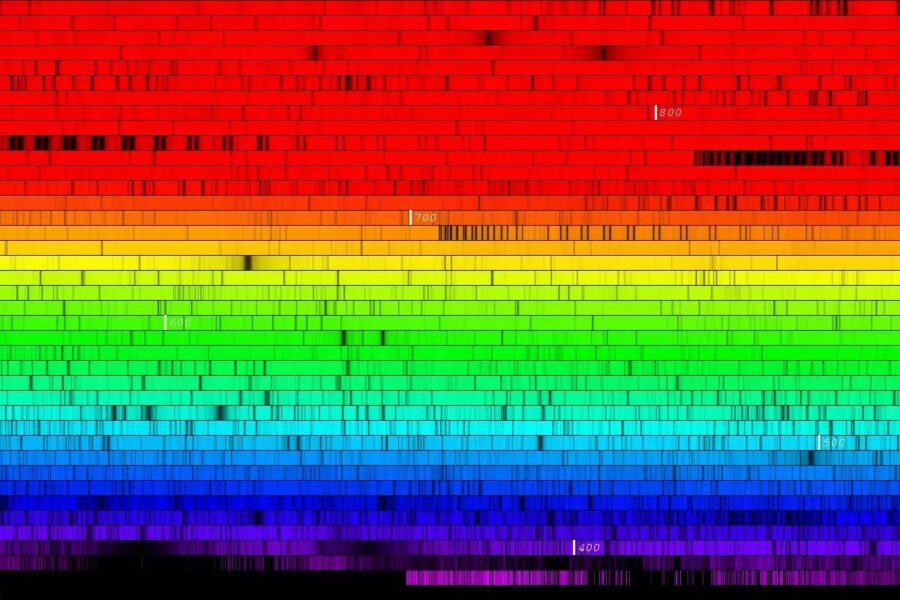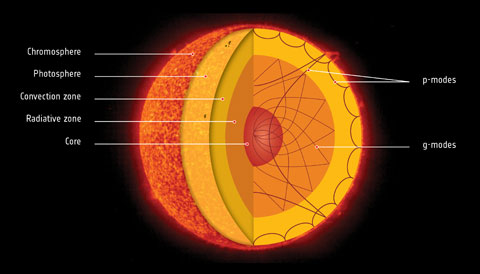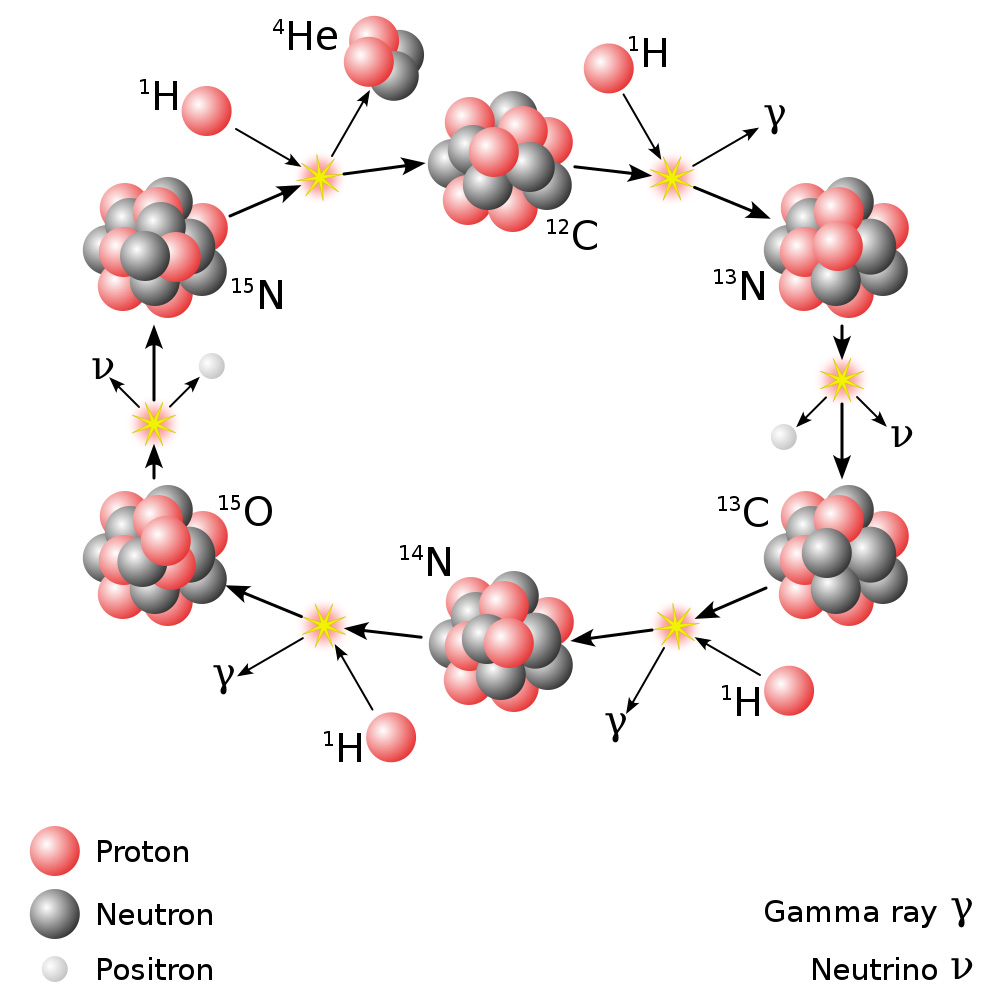New data from a laboratory tucked under a mountain has shed light on what’s inside the Sun.

M. Bergemann / MPIA / NARVAL@TBL
Physicists working on the Borexino experiment in Italy have used solar neutrinos to measure the abundances of carbon and nitrogen in the Sun's core for the first time. Their analysis of almost five years of data deepens a decades-long debate between astronomers about the true composition of the Sun.
The debate hinges on different ways of measuring what’s in the Sun, and the Borexino experiment has the potential to weigh in on the matter based on a tiny subatomic particle: the neutrino.
Around 99% of the Sun's energy is produced when hydrogen fuses into helium through a series of steps called the proton-proton (pp) chain. The remainder comes from the CNO cycle, which involves the fusion and decay of various isotopes of carbon, nitrogen, and oxygen. Both mechanisms produce neutrinos as by-products.
Back in 2020 physicists announced that they'd detected neutrinos from the Sun's CNO cycle for the first time using Borexino, an underground detector beneath Italy's Gran Sasso mountain chain. They obtained this new data between January 2017 and October 2021, seeing an average of 4.8 CNO neutrinos a day. Now, the physicists have halved the errors on their measurements compared to 2020, which enables them to measure the abundances of carbon and nitrogen in the Sun's core. They’ve published the findings in Physical Review Letters.
Before these results, astronomers had two ways to measure what the Sun is made of: spectroscopy and helioseismology.
Spectroscopists break up the Sun's light into a spectrum, looking for chemical fingerprints called absorption lines, in which various elements have swallowed particular frequencies of light. Helioseismologists, on the other hand, measure sound waves that have reached the solar surface after bouncing around inside the Sun. The more heavy elements the Sun has, the more they prevent sound waves from reaching the surface. (Astronomers refer to elements heavier than hydrogen and helium as metals; the more metals the Sun contains, the higher its metallicity.)

ESA / NASA
The two independent methods once agreed with each other. However, new, improved measurements in the 2000s caused them to diverge significantly. Now, the helioseismologists argue for a higher metallicity than what the spectroscopists detect, in what has become known as the solar abundance problem.
In May 2022, a team led by spectroscopist Ekaterina Magg seemed to bring the two camps closer together by finding 26% more metals at the solar surface than previous spectroscopic studies. The new carbon-nitrogen abundances from Borexino neutrino data seem to fit Magg's result, albeit with a large possible range. The Borexino data result in between 9% to 58% more metals in the interior than previous studies.
“Our measurement agrees very well with the so-called high-metallicity compilations,” the team write in their paper, “while featuring a moderate . . . tension with the low-metallicity ones.”

Public domain
Helioseismologist Sarbani Basu (Yale University), who was not involved in the neutrino study, thinks this finding is significant. “I think the Borexino results do favor the helioseismic constraints on metallicities, given that spectroscopic results from Magg and colleagues [also] give a higher metallicity,” she says.
Yet a new paper recently accepted for publication in Astronomy & Astrophysics questions this supposed agreement. “If you take into account the effects of the Sun's rotation and the observed depletion of lithium at the solar surface, even models with high CNO abundances from Magg and colleagues disagree with the Borexino results,” says study lead Gaël Buldgen (University of Geneva).
If Buldgen is correct, that would leave CNO neutrinos and helioseismology making the case for a high metallicity in the solar interior — but with spectroscopy still favoring a lower one at the solar surface.
Both camps could be correct. According to a November 2022 study, also published in Astronomy & Astrophysics, it’s possible the core metallicity could be 5% higher than on the surface if the Sun gathered material from the proto-solar disk unevenly.
More CNO neutrino observations would certainly help reduce the uncertainty surrounding these tentative measurements, but they won't be coming from Borexino. The experiment was shut down in October 2021 and there are currently no other facilities that can observe these low-energy neutrinos.
It seems, at least for now, that this long-running debate will continue to rumble on.
 1
1









Comments
robin_astro
January 1, 2023 at 6:08 am
".....They’ve published the findings in Physical Review Letters....."
Here's the link to the paper
https://journals.aps.org/prl/abstract/10.1103/PhysRevLett.129.252701
You must be logged in to post a comment.
You must be logged in to post a comment.